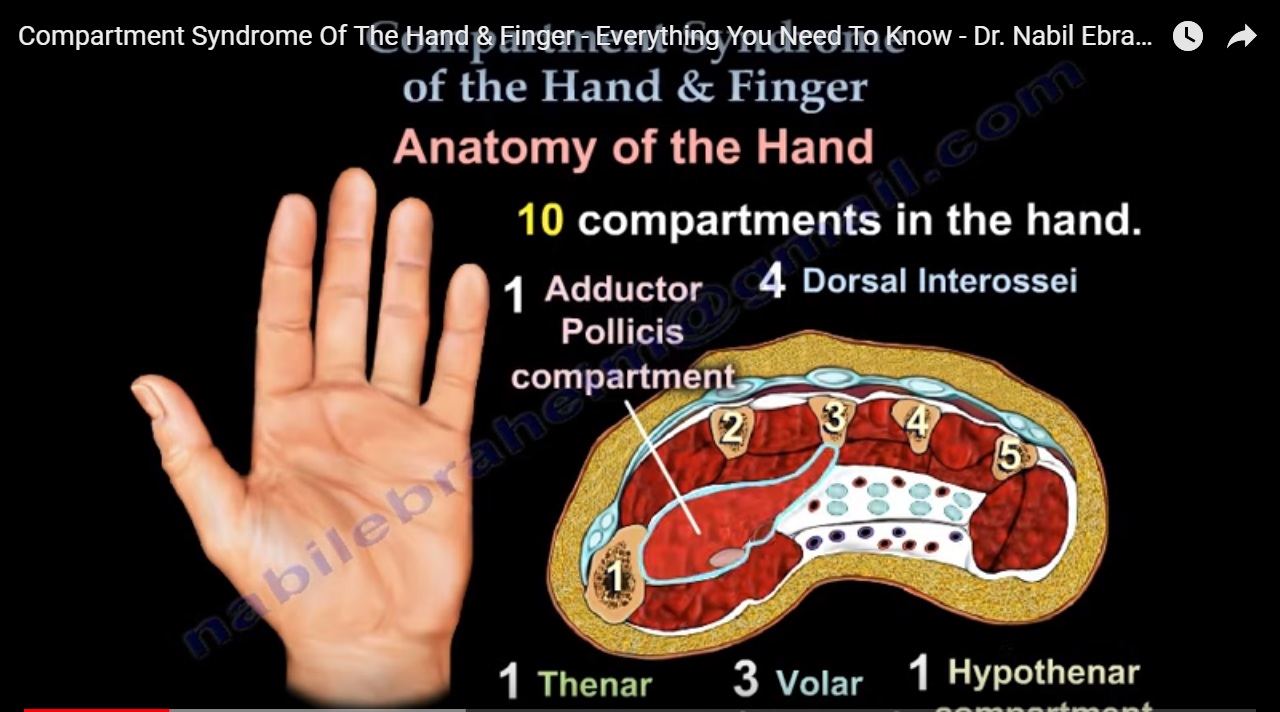Courtesy: Prof Nabil Ebraheim, University of Toledo, ohio, USA
Compartment syndrome of the hand often results from iatrogenic injuries due to IVs or A-lines. Other etiologies include snake bites, crush injuries to the hand, burns, trauma, and prolonged pressure.
Anatomy
10 compartments in the hand:
- 4 dorsal interossei
- 1 hypothenar compartment
- 3 volar interossei
- 1 thenar compartment
- 1 adductor pollicis compartment
Clinical presentation
•Hypothesia on the volar surface of the fingers.
•Tenderness in the palm
•Weakness of thumb opposition and limited flexion.
•Pain with passive abduction and extension of the thumb.
•Passive extension of the little finger causes pain in hypothenar eminence.
•Limited little finger flexion
•Intrinsic plus hand deformity with flexion of the MCP joints and extension of the IP joints.
•Pain with flexion of the IP joints
Clinical signs to differtiate between forearm & hand compartment syndrome
•Forearm compartment syndrome
•Pain with passive extension of fingers
•Hand compartment syndrome
•Pain with flexion of the IP joint.
Fasciotomy of the hand
•Dorsal incisions of the hand in line with the 2nd and 4th metacarpals. Dorsal incisions may not be enough. Additional incisions and/or carpal tunnel release may be necessary. An incision is made along the radial aspect of the 1st metacarpal in order to release the thenar compartment. An incision is made along the ulnar aspect of the 5th metacarpal to release the hypothenar compartment.
•Carpal tunnel release is sometimes associated with compartment syndrome.
•Mid-axial incision is given on the ulnar side of the index, middle, and ring fingers and the radial side of the small finger. dissect across the digit superficial to the flexor tendon sheath

Leave a Reply